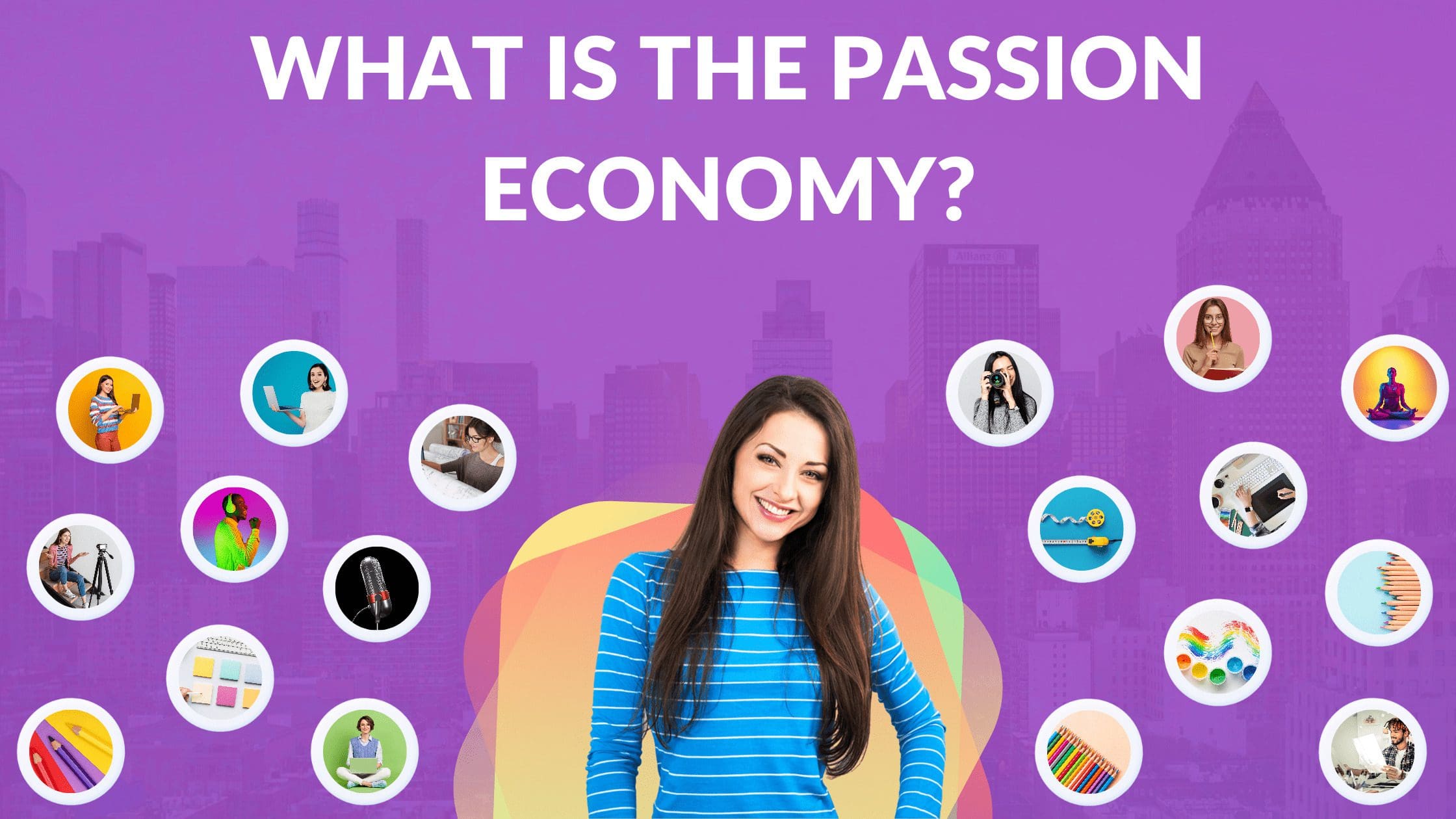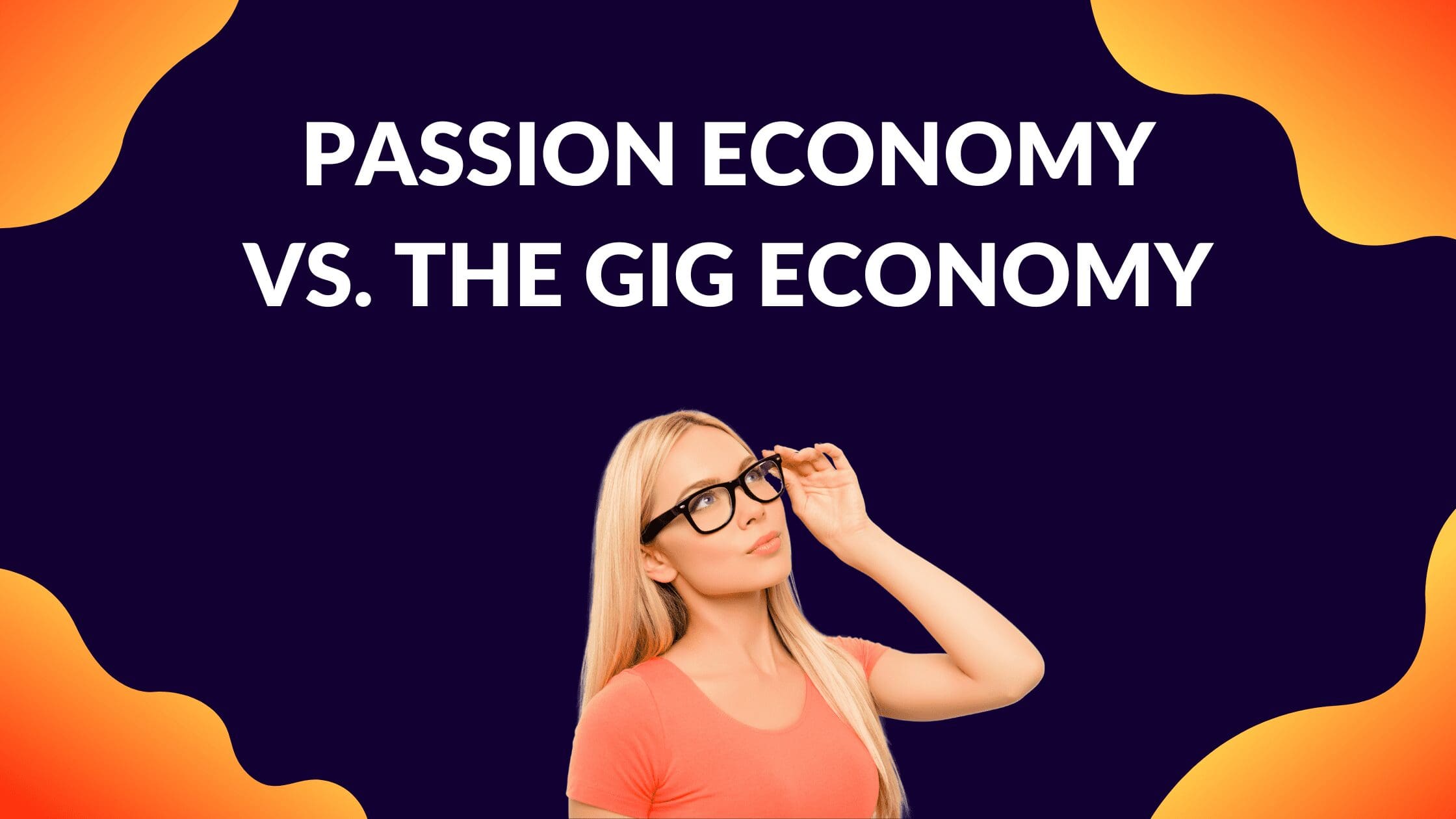What is the Passion Economy?

Written by Casey Botticello
Disclosure: Some of the links below are affiliate links, meaning that at no additional cost to you, I will receive a commission if you click through and make a purchase. Read our full affiliate disclosure here.
The concept of the passion economy being “the future of work” has been circulating in cyberspace for approximately five years. But now, the future is here, and more people are latching on to what this way of life has to offer.
But what exactly is the passion economy, and why has it become such an important topic? More importantly, why should you care about this so-called new economy that is said to be disrupting the employment landscape?
Like many people, you have probably heard the term mentioned before, but for one reason or another, may have not received much clarity on the subject. Well, you are in luck, as this article will provide you with answers as to what the passion economy entails and how it will impact the future. First, an answer to the obvious question…
What is the Passion Economy?

The passion economy is a work lifestyle that allows creative individuals and entrepreneurs to package their passions and talents into marketable businesses, brands, and communities. It opposes the traditional “exchanging of time for money” model, and prioritizes niche communities over attention-driven social media entities.
The term is credited to Adam Davidson, staff writer at the New Yorker and co-founder of the Planet Money podcast on NPR. Davidson used the phrase in his book The Passion Economy to discuss the increasing practice of people turning their skills, hobbies, and interests into thriving businesses.
Another authority figure on the topic is venture capitalist, Li Jin. Also a writer and entrepreneur, Jin has helped to generate more attention by writing intensely about the topic and starting two companies focused on the passion economy – Atelier and Side Hustle Stack.
Passion Economy vs. Current Model of Employment

One of the ways to understand the passion economy is to compare it with what currently exists within the employment market. First, there is the traditional work arrangement, where people go to a job or are assigned to projects and get paid based on time spent or units completed. This kind of work economy has been in place for many decades, and is more or less the norm across the world as a result of globalization and capitalism.
The other notable work arrangement is the “gig economy,” which exploded with the widespread use of the internet in the early 2000s. Startups such as Uber, Upwork, and Fiverr are among the drivers of the gig economy, which involves contracted employees and freelancers, who earn based on completing individual tasks.
While disruptive, a big issue with the gig economy is that workers have to keep looking for the next gig – sometimes juggling several tasks at once – in order to make a living. The high level of competition among freelancers and brands can result in a diminishing of the value of the work, with companies often hiring the cheapest contractor.
It is not believed that these two existing work models will disappear any time soon. But the passion economy is consistently luring workers away because of its ability to provide more sustainable means of making money while allowing people to do what they are truly passionate about, on their own terms. What’s more, participators in the passion economy are able to build their own niche audiences, following, or fan bases that support their work, instead of having to constantly advertise to gain customers.
How Big is the Passion Economy?

As it is still in the infancy stages, there is precious little data available about the size of the passion economy. But an article on the creator economy notes that this segment of the passion economy currently has over 50 million participants worldwide, including independent content creators, curators, and influencers.
Since the creator economy is only a part of the passion economy, it is believed the overall number of workers in the latter is much larger than that figure.
In terms of monetary value, the passion economy is quickly becoming a force to be reckoned with. In fact, this economy was estimated to be worth $38 billion at the end of 2019, according to the digital community platform, Disciple Media.
And although no new data has since been published, the growth in market size can reasonably be estimated to be exponential between then and now, considering the rising success of dozens of passion economy-based platforms.
Back to the World Economic Forum, the entity has pointed out that the passion economy was becoming mainstream and would drive 85% of the new types of jobs that would be around by 2030, but don’t yet exist in 2022.
Moreover, a significant portion of the 400 million jobs lost during the COVID-19 pandemic is expected to remain unfilled due to people turning to entrepreneurial pursuits.
How Creators Participate in the Passion Economy

A recent article by the World Economic Forum about the Great Resignation noted the need for a better work-life balance being among several reasons why people were quitting their jobs in record numbers. Another piece by Forbes on the rise of the passion economy pointed out that consumers were tiring of social media platforms which were harnessing massive profits from their activities without giving much in return.
These and other articles go on to highlight how people are using the passion economy to derive more beneficial interactions, monetize their skills and, ultimately, doing what they love. With that said, people are participating in the passion economy in various ways such as:
- Creating downloadable design templates that can be sold passively on a marketplace like Etsy.
- Packaging online courses and uploading it to eLearning platforms such as Thinkific where an unlimited number of students can enroll for a fee.
- Launching newsletters on websites such as Substack and Revue, which can enable writers to earn from paid subscriptions.
- Self-publishing e-books on the Amazon Kindle platform that people can purchase directly.
- Writing blog posts on platforms that generate revenue via subscriptions, ad placements, and affiliate links.
In these and other cases, the passion economy makes it easier for participants to deliver value on their own terms while increasing their earning potential.
Impact of COVID-19 on the Passion Economy

The COVID-19 pandemic is believed to have further catalyzed the march to passion-based occupations. For starters, the pandemic resulted in the closing down of thousands of businesses. Remote work quickly became the norm, instead of the exception.
This change in lifestyle led to more people seeking out online communities to deal with being isolated. At the same time, both the unemployed and work from home crowds began exploring new online opportunities to engage their peers, network, and gain new skills.
Whether by chance or through deliberate means, the discovery of certain platforms allowed people to share their knowledge and/or skills with others and possibly earn an income.
By the end of the first year of the pandemic, while jobs were still being lost, applications for sole trader businesses had risen sharply. Media outlets such as The Economist, for example, found that by late 2020 there was a 50% increase in US residents starting businesses in information sector categories such as digital publishing, web search portals, and data processing.
Moreover, the Wall Street Journal discovered that a significant amount of workers who got laid off during the pandemic switched to becoming entrepreneurs.
Who Takes Part in the Passion Economy?

Finding any measure of success in the passion economy requires aspiring participants to come up with products and services that consumers will find value in. That being said, the passion economy is open to anyone, regardless of skill level and experience. This is, in fact, one of the attractive features of this type of economy – skill level and experience are not barriers to entry. According to research published by SignalFire on the creator economy, more than 95% of creators are amateurs, with the rest being professionals.
Notable Platforms Driving the Passion Economy

To be clear, human beings have been tapping into their passions since time immemorial. But up until now, it was thought that most people who pursued their passions, whether music, writing, or acting, often ended up poor or eventually had to let go of their “dreams” to pursue more realistic modes of employment.
While the main drivers of the passion economy include people who are looking for new ways to make money, several digital platforms have also emerged to capitalize on that need. The main goals of these solutions include helping people to express their talents while having the chance to build an audience and gain revenue.
Many are classified as software-as-a-service (SaaS) platforms that offer tools and resources to help users with packaging, publishing, and marketing their offerings to the right people. They often fall into several categories, including:
1. Video Publishing & Video Streaming

2. Subscription Newsletters

Paid subscription newsletter platforms are designed to help writers, in particular, set up and publish their own newsletters, and charge for subscriber access. Substack, Revue, and ConvertKit are among the most popular choices in the newsletter publishing space. The main earning strategy is to invite paid subscriptions, but some newsletter platforms also allow affiliate links and fan patronage.
3. Online Community Builders

These are websites and tools that allow individuals and companies to set up digital communities, whether for customers or general consumers within a specific niche. Top community building software include PeerBoard, Tribe, and Circle. There are a number of ways to monetize online communities, including paid memberships, subscriptions, referral programs, and affiliate links.
4. Pre-Monetized Blogs

As the name suggests, these are platforms geared towards bloggers, and include Medium, Steemit, and Mirror.xyz. Unlike setting up your own blog, these websites come with ready-made blogging tools that ensure writers only have to focus on creating the content. Monetization is also built-in and includes paid subscriptions, affiliate links, page views, and even cryptocurrency trading.
5. Virtual Course & Webinar Creators

These are tools that can be used by skilled workers, professional educators, and independent DIY creators to package, publish, and market learning content online. Top solutions in this category include Thinkific, Skillshare, Podia, and Teachable. Users of these platforms can earn via paid enrollments and downloads, recurring subscriptions, affiliate links, and referral programs, among other strategies.
6. Patronage & Tipping Websites
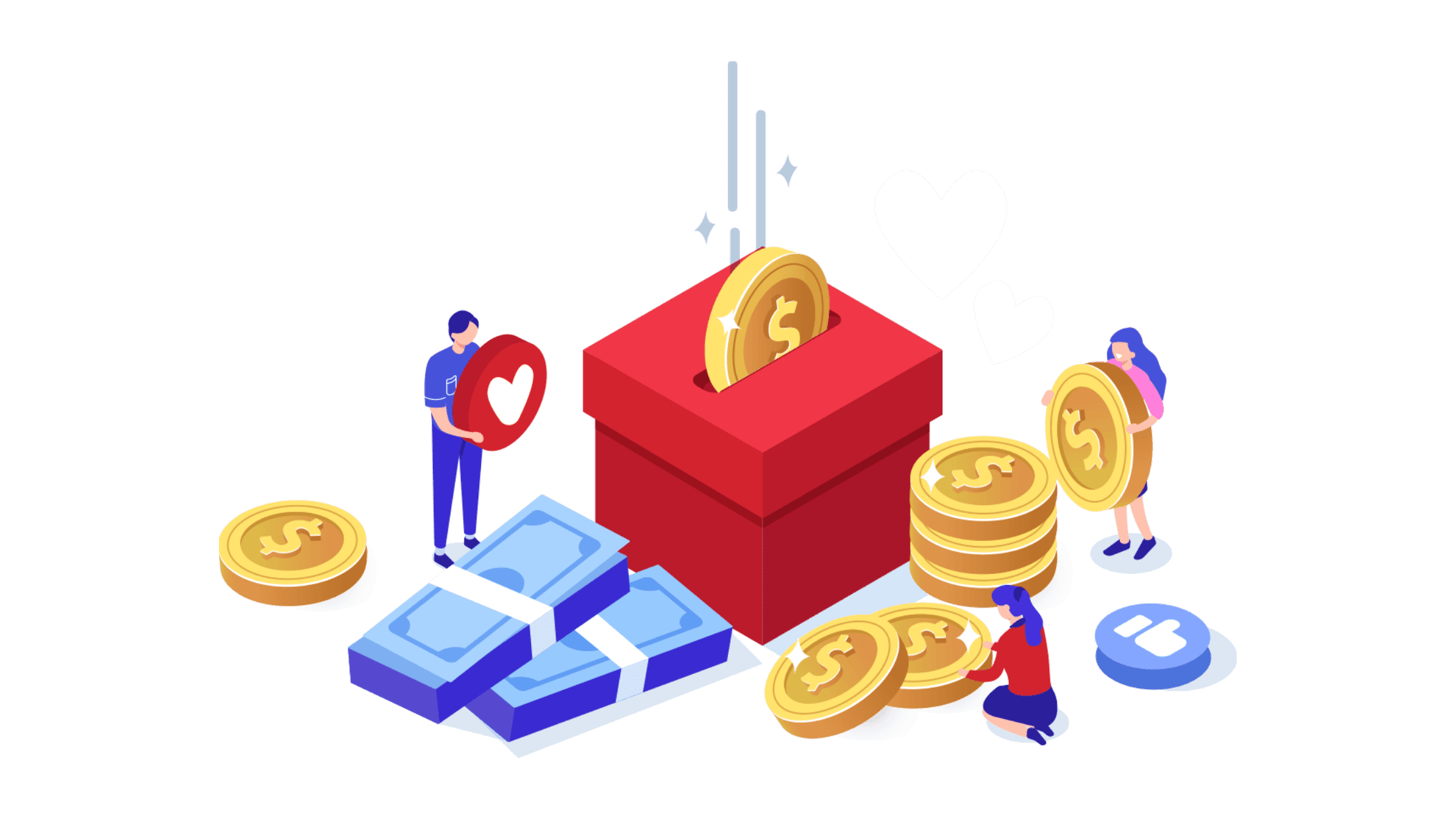
These platforms operate in a similar fashion to patronage and tipping solutions, but are mainly fan-based. OnlyFans is one of the main websites in this category, as well as Patreon and Cameo. Users monetize a variety of personalized content through paid subscriptions and one-time payments, along with tips and donations.
7. Audio Publishing & Podcasting

These are platforms that allow podcasters, skilled professionals, and other creators to record and publish podcasts and other audio content. The websites in this category include Knowable, Anchor, and Glow. Monetizing strategies often involve premium subscriptions, number of listens/minutes listened, sponsorships, and referrals.
8. eBook Self Publishing Tools

These are platforms that enable writers and other individual creators to self-publish their own books online. Amazon’s Kindle Direct Publishing is the most well-known solution in this category but there are also other choices such as CreateSpace and Kobo. Users can make money from paid downloads, subscriptions, and pay-per-view.
9. Printable Art & Design Markets

These are platforms that enable writers and other individual creators to self-publish their own books online. Amazon’s Kindle Direct Publishing is the most well-known solution in this category but there are also other choices such as CreateSpace and Kobo. Users can make money from paid downloads, subscriptions, and pay-per-view.
How Do Creators Make Money in the Passion Economy?
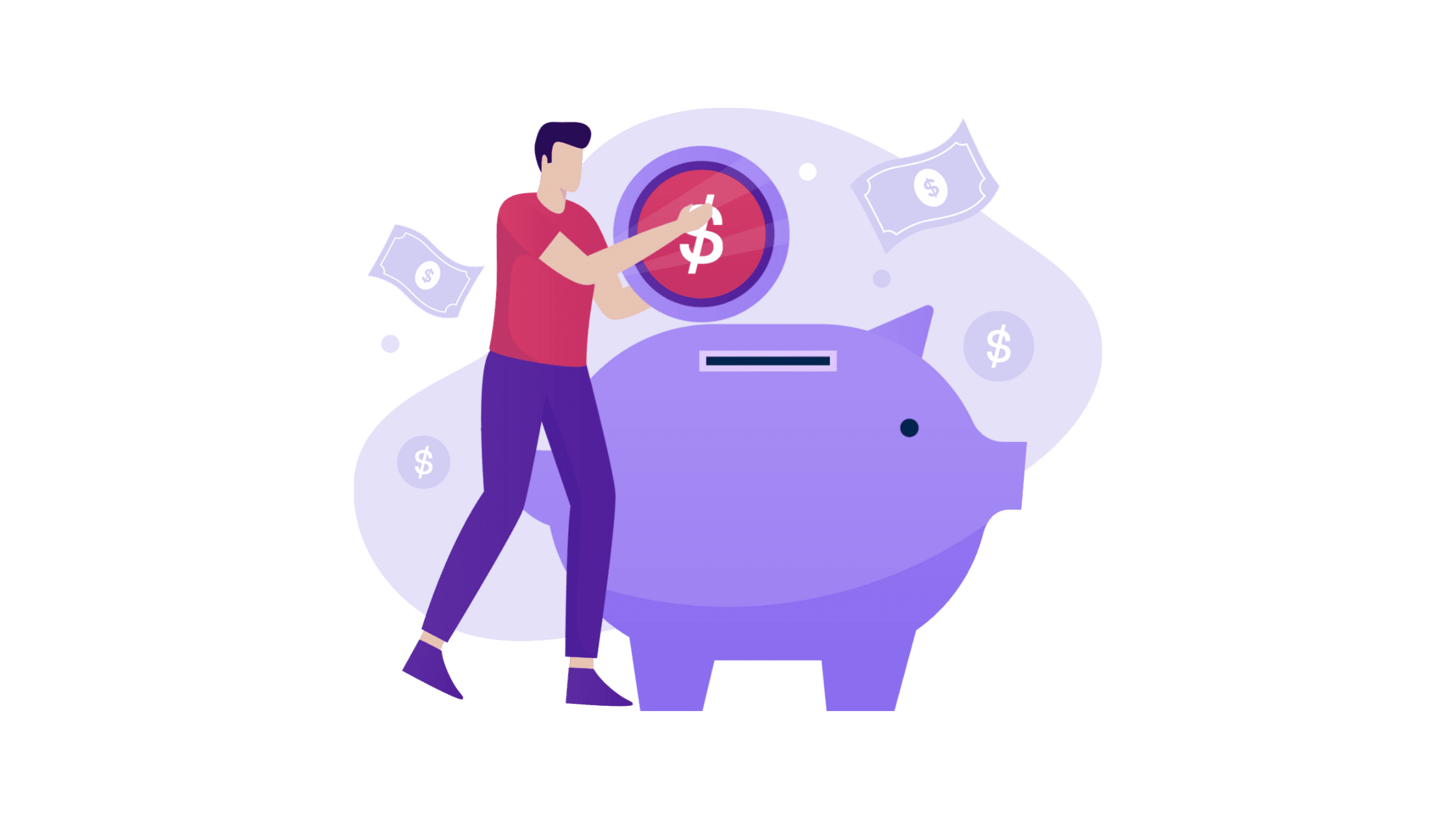
The traditional and gig economies usually see workers earning in a few ways – including trading money for time, selling units, and through advertisements.
By contrast, the passion economy not only offers plenty more ways for people to earn but also opens up the door for participants to earn passively.
The list of ways to earn an income in the passion economy include:
- Paid subscriptions
- Direct sales of digital products and services
- Revenue shares from ad placements
- Sponsorships (content, performances, products, etc.)
- Paid virtual experiences
- Paid live events
- Physical products such as on-demand printed merch
- Premium memberships and fan clubs
- Shout-outs
- Views count
- Crowdfunding
- Tipping and patronage
Why The Passion Economy is Seen as the Future of Work

The current work landscape is changing at a more rapid pace than it ever has in recent memory. Many manual and repetitive tasks, for instance, are being made obsolete due to a rise in automation and the deployment of robots. As a result, large companies in areas such as manufacturing and warehousing (Amazon, for example) have trimmed production staff in favor of more efficient algorithms and machines.
But that’s not the only reason why the passion economy is seen as the future of work. Some other factors include:
1. Changing Attitudes

Some segments of the population, particularly the Gen Z and millennial demographics, have developed different belief systems and lifestyle outlooks as it relates to employment.
Many of these younger professionals have publicly expressed their dislike of the traditional 9 – 5 job, while others are starting side hustles on platforms such as YouTube, Instagram, and TikTok.
On top of that, the next generation of workers (those expected to hit the workforce within the next few years) are not attracted to the traditional ways of work.
One survey even found that “YouTuber/Vlogger” was the top career choice among kids in the US and UK.
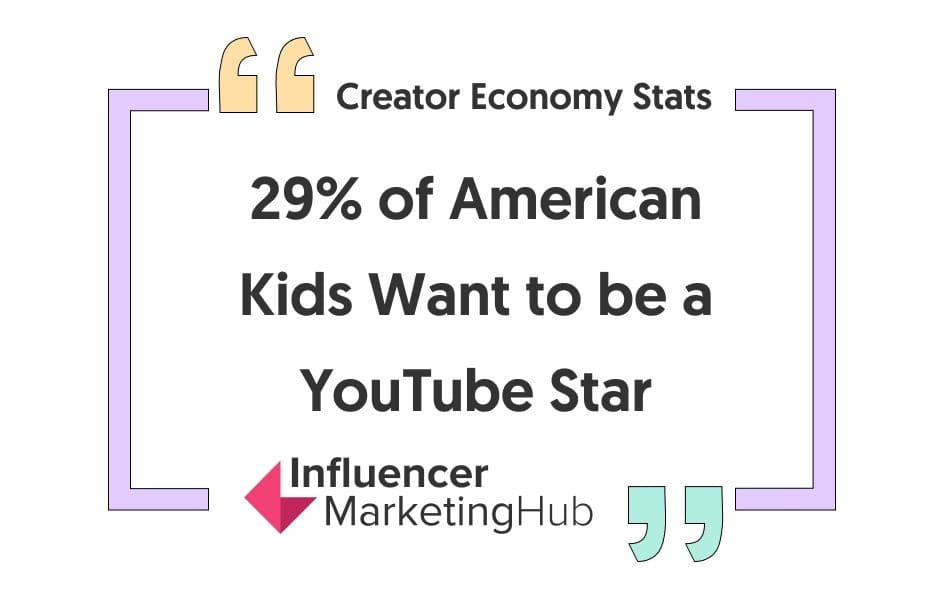
2. Better Work Life Balance

The passion economy offers more control over the time people spend at work, as compared to the time they have left to do personal stuff. The ability to work from anywhere, at any time, and being able to set one’s own work hours is particularly appealing.
This flexibility will continue to be a main attraction of the passion economy, as people grow weary of the current prevailing work environments.
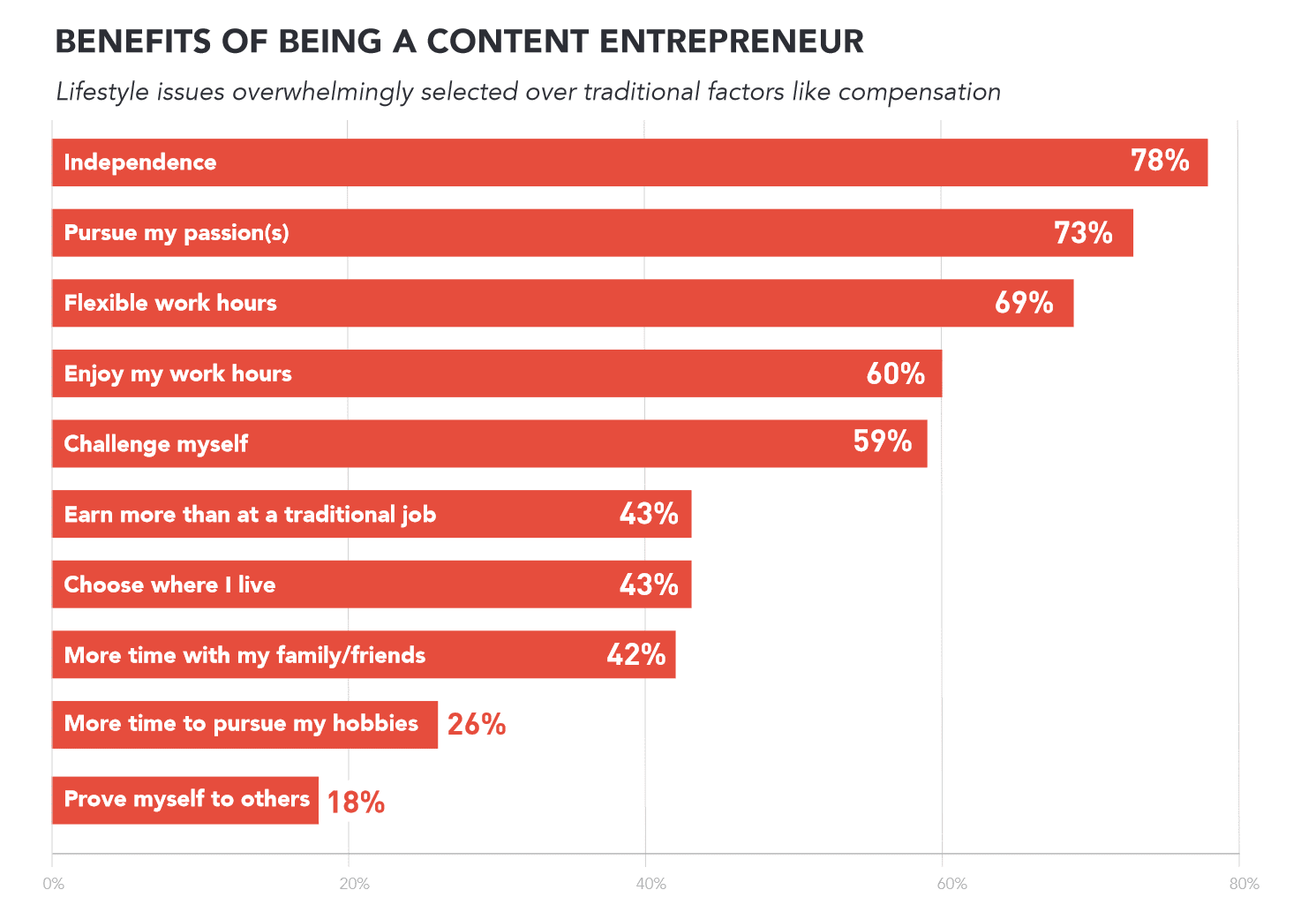
3. Investments in New Technology

Participants in the passion economy utilize various platforms that allow them to monetize their unique skills and knowledge while connecting with more engaged niche audiences.
At the same time, financial technologies such as cryptocurrency and NFTs are diversifying the ways people earn. A number of investors have picked up on these revolutionary technologies and are doing what they can to develop new solutions while helping more people discover and utilize them.
Li Jin, for instance, has mentioned that Atelier, her passion economy investment company, is backing emerging platforms “that give people new ways of earning income and new paths to professions that had historically been gatekept or hard to access.”
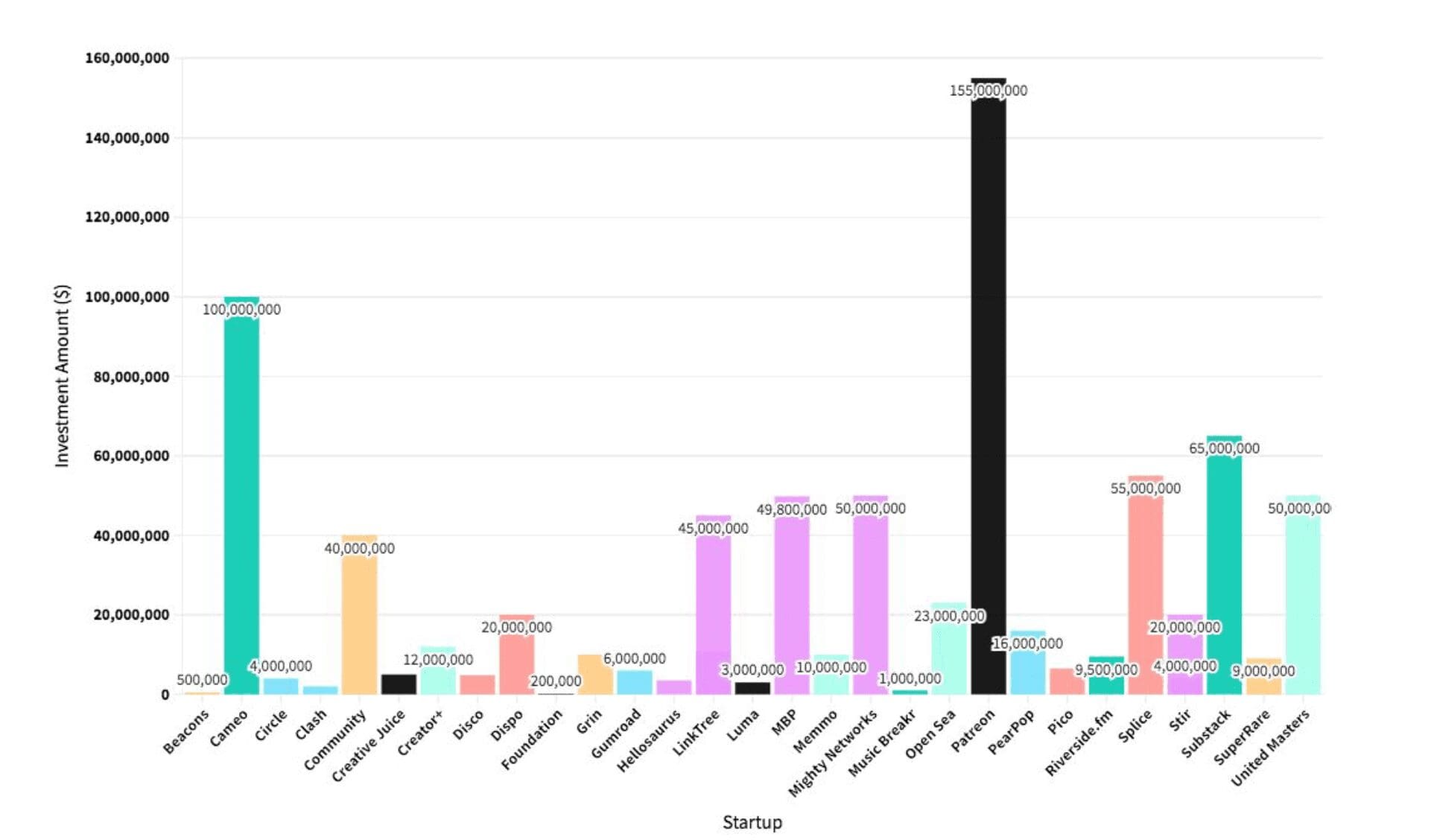
4. Low Barriers to Entry

Another reason why the passion economy is gaining popularity is the absence of certain hurdles. In the traditional workplace, prospective employees need to have specific qualifications and experience in order to get hired.
For entrepreneurs trying to launch a startup or grow a business, it often means having to source huge amounts of capital. In the passion economy, there is a need for skills and knowledge, but there is still space for those who are learning or who want to explore their different talents.
On top of that, there is sometimes very little in terms of startup capital required to launch a business in the passion economy. In some cases, all that is needed is a capable computer or mobile device and an internet connection.
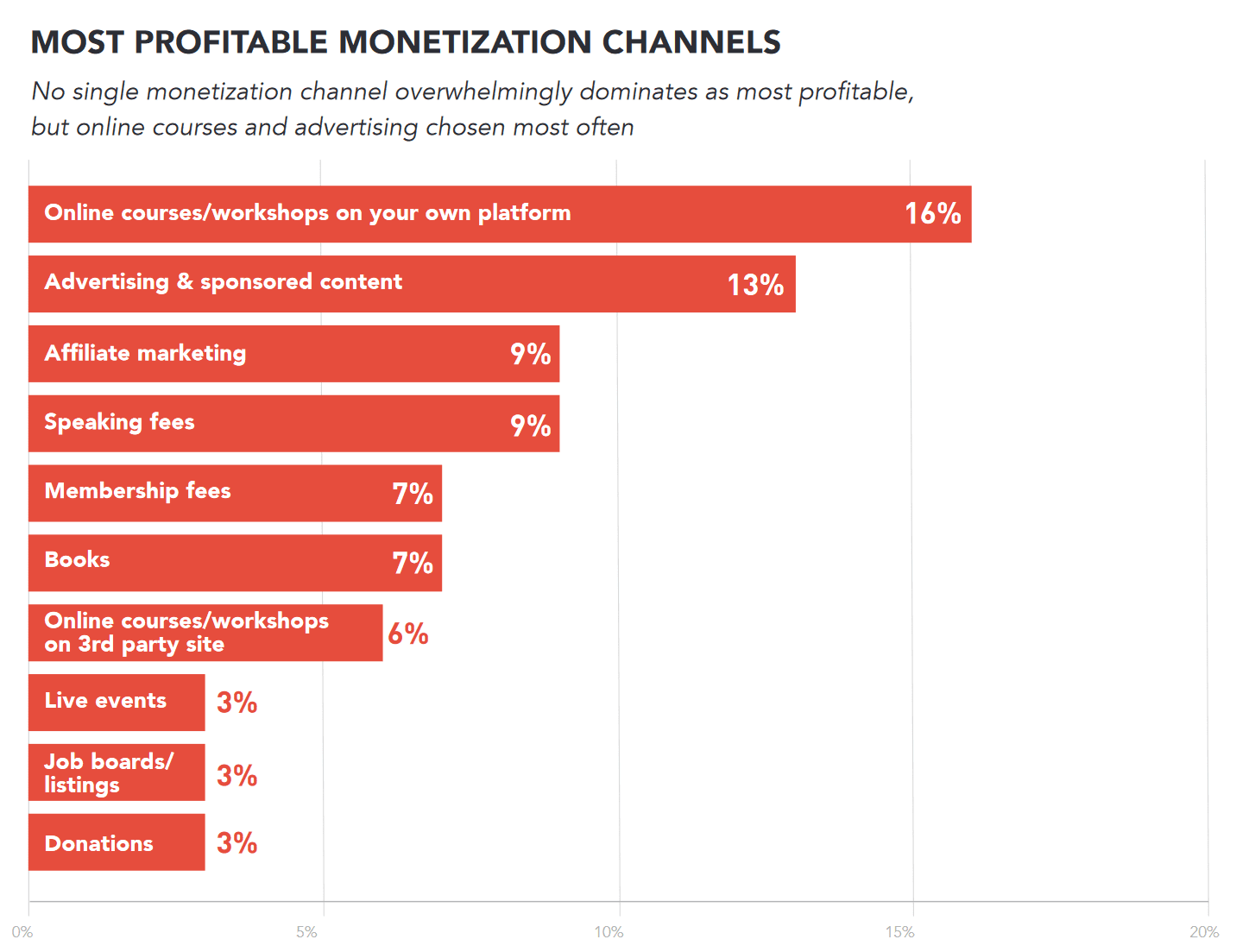
5. High Earning Potential
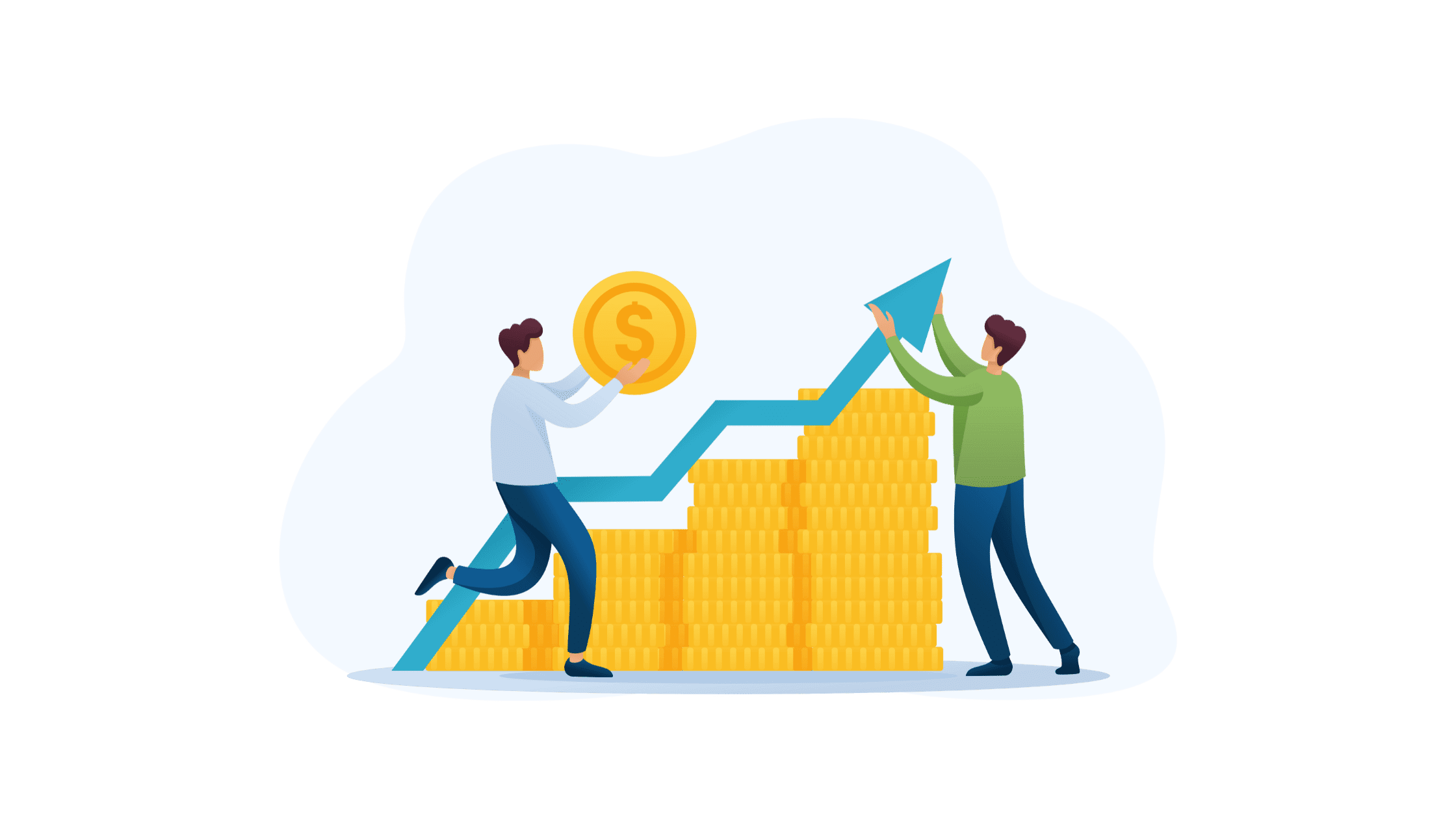
Another reason why the passion economy is gaining popularity is the potential for high earnings as a full time content creator.
While increasing your income as a creator takes time, commitment, and some financial investment in yourself, the fact that you can make six figures annually by being a top performer across one of many passion economy platforms, is very enticing.
And while the passion economy does currently lack a vibrant “middle class,” there are signs of substantial amounts of creators who are making enough money to quit their jobs or reduce their workload in order to focus on their passion. These creators earning a decent “part time” wage may not generate the headlines like ultra-high earners, but since success in the passion economy is partly based on investing large amounts of time up front, it stands to reason that by allowing creators to spend more time pursuing their passions, the more full time income earning creators will emerge.

Conclusion
As the ongoing pandemic continues to impact the global marketplace, it is expected that the work landscape will keep changing. At the same time, the passion economy will open new doors for individual creators, entrepreneurs, and accomplished brands to build meaningful communities and generate long-term value.
